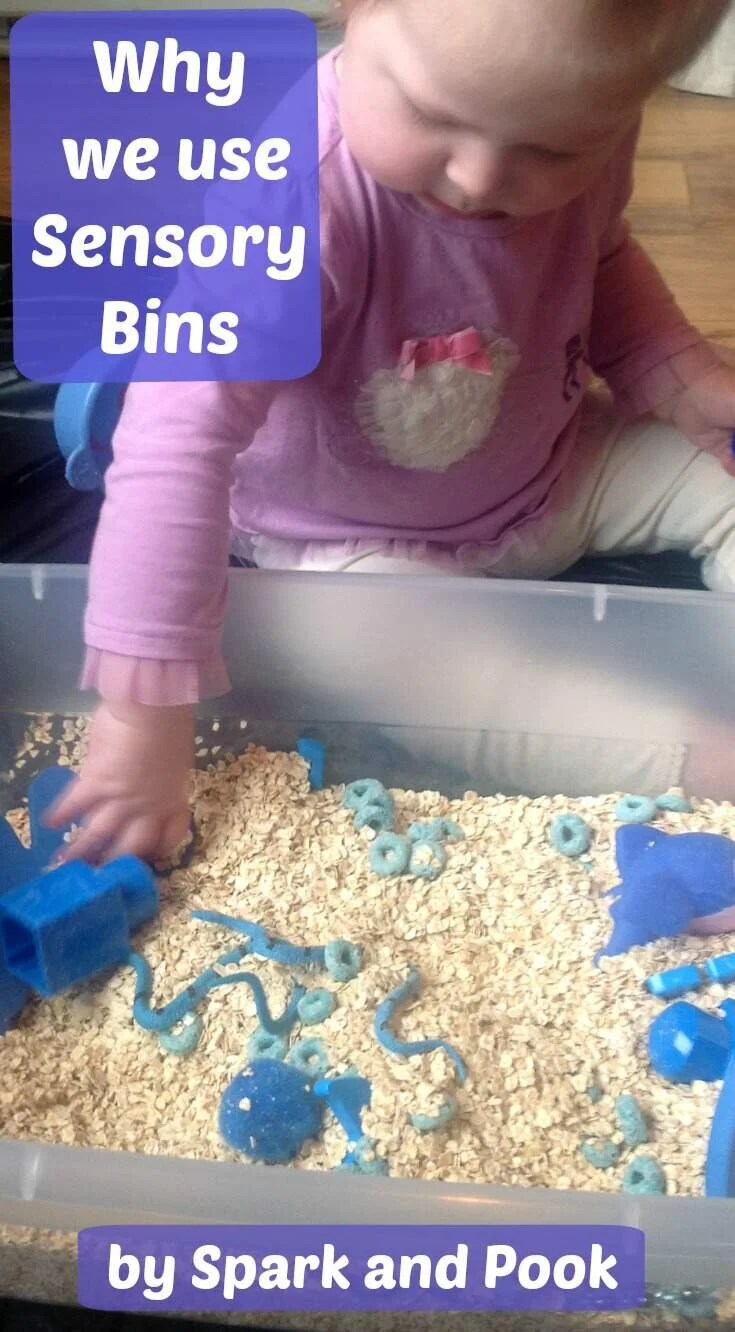Why we use Sensory Bins
If you're new to sensory bins, you may be asking, "What's the point?"
Why do we use sensory bins?
I use sensory bins for three main reasons.
Exposure to new textures
Extended independent play time
Educational elements
What do I mean by Exposure to new textures?
For the first few years of her life, my daughter had a strong hesitancy toward new textures. Early on, she absolutely refused to touch things like spaghetti, playdoh, birthday cake, bubbles, grass, potting soil, dried corn, etc... The list goes on and on. Basically, any new texture had to be introduced to her on a gradual basis in order for her to not freak out about it. After extensive and intentional use of sensory bins, my daughter has overcome her extreme hesitancy toward new textures. They've helped her enjoy the world around her more.
What do I mean by Extended independent play time?
My daughter will play independently for half an hour or more when given a sensory bin. Something about running her hands through the filler (rice, oats, bird seed, etc...) just mesmerizes her. I know she's not alone in this. Her friends love to play with our sensory bins too. (The initial exposure to a new sensory bin would usually require a few no-pressure introductions to the new filler substance before she was ready to play independently with it.)
What do I mean by Educational Elements?
Being a trained teacher, I can't help but add some form of educational elements to our sensory bins. For example, the bin could be filled with things that are all the same color as a way to introduce that color. Or you can hide things in the bin for the child to find like we did with our Alphabet Pom Pom Sensory Bin. You could also incorporate fine motor skills as well as the skills of counting and sorting into a sensory bin. We've also enjoyed practicing our phonics skills when playing with our Mystery Letter Sensory Box.
To see more of our sensory bin fun, click on the "Sensory Play" subheading under the menu category, "Learning at Home" at the top of the page.
Or simply search this blog for sensory bins using the search box at the bottom of the page.
Need more inspiration? Follow my Sensory Exploration board on Pinterest.
If you're new to sensory bins, don't hesitate to jump right into the fun! Whether your child is dealing with sensory processing difficulties or not, your toddlers, preschoolers, and other young kids are sure to have fun with them.
If you found this helpful, please share it with others. The image above is pinnable. Thanks!
To learn more about Sensory Processing check out Sensory Processing 101.




